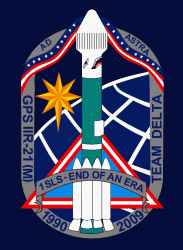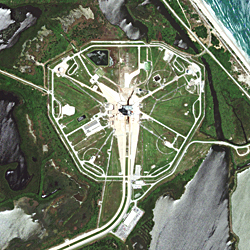 GPS IIR-21(M)
GPS IIR-21(M) The U.S. Air Force successfully launched the last in the series of eight modernized GPS (IIR-M) satellites today (August 17) at 6:35 a.m. (EDT).
Using the Space Launch Complex 17A at Cape Canaveral Air Force Station, Florida, the satellite was carried into space aboard the last of the Air Force’s United Launch Alliance Delta II rockets.
GPS IIR-21(M) will join the constellation of 30 operational satellites on-orbit, assuming a position in plane E, slot 3 and replacing space vehicle number 40 (SVN40). The Air Force expects to set the satellite healthy for navigation users worldwide next month.
The U.S. Air Force successfully launched the last in the series of eight modernized GPS (IIR-M) satellites today (August 17) at 6:35 a.m. (EDT).
Using the Space Launch Complex 17A at Cape Canaveral Air Force Station, Florida, the satellite was carried into space aboard the last of the Air Force’s United Launch Alliance Delta II rockets.
GPS IIR-21(M) will join the constellation of 30 operational satellites on-orbit, assuming a position in plane E, slot 3 and replacing space vehicle number 40 (SVN40). The Air Force expects to set the satellite healthy for navigation users worldwide next month.
The launch brings to a close a relationship between the Delta II and GPS programs that has lasted more than three decades. Since its first launch in February 1978 [[Editor’s Note: correction, make that "since its first launch in 1989" and "more than two decades"]], the Delta II has been the sole booster for the Block II, IIA, IIR, and IIR-M generations of GPS satellites that has enabled the United States Air Force to construct the current operational constellation.



 before launch.jpg)

